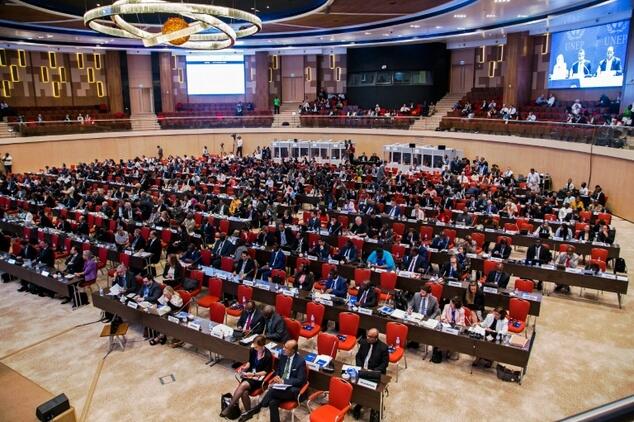“We should not allow ourselves to be satisfied with making a little bit of good progress when it is within our power to actually solve the problem,” Kagame told the meeting, attended by representatives of 197 countries.
US Secretary of State John Kerry is among the 40 ministers expected.
Kagame, whose small east African nation has put the environment at the heart of its development strategy, said that eradicating HFCs “will make our world safer and more prosperous”.
Maxime Beaugrand of the Institute for Governance and Sustainable Development was positive that there would be an agreement Friday to phase out HFCs.
“Negotiations are moving in the right direction. I think we can expect an amendment tomorrow in Kigali and I think it will be sufficiently ambitious,” she told AFP.
HFCs predecessors, chlorofluorocarbons (CFCs), were discontinued under the ozone-protecting Montreal Protocol when scientists realised the compounds were responsible for the growing hole in the ozone layer, which protects Earth from the Sun’s dangerous ultraviolet rays.
However it emerged that HFCs — while safe for the now-healing ozone — are thousands of times worse for trapping heat in the atmosphere than carbon dioxide, the main greenhouse gas.
“(HFCs) are increasing at a rate of 10-15 percent a year,” Greenpeace global strategist Paula Carbajal told AFP. “That makes them the fastest-growing greenhouse gas.”
According to a study by the Berkeley National Laboratory, residential air conditioning is the cause of the largest growth in HFCs — and the world is likely to have another 700 million air conditioners by 2030.
“The world room air conditioner market is growing fast with increasing urbanisation, electrification, rising incomes and falling air conditioner prices in many developing economies.”
Beaugrand said alternatives to HFCs existed in all refrigeration sectors.
These alternatives “either have less of a warming potential than HFCs or they are natural like ammonia”.
Other alternatives are water and gases called hydrofluoroolefins (HFOs) which are a form of HFCs, however some, like Greenpeace, believe these are still too dangerous.
A gradual phase-down
Carbajal said HFCs could add as much as 0.1 degrees celsius (0.18 Fahrenheit) to average global temperatures by mid-century, and 0.5 degrees celsius (0.9 F) by 2100.
The Paris climate agreement aims to keep global warming below two degrees celsius, compared with pre-industrial levels, and continued use of HFCs could prove a serious stumbling block to attaining the goal.
“If HFC growth is not stopped, it becomes virtually impossible to meet the Paris goals,” said David Doniger of the Natural Resources Defense Council, an environmental advocacy group.
HFCs — though they are greenhouse gases like carbon dioxide, methane and nitrous oxide — are not dealt with under the Paris Agreement but under the Montreal Protocol, adopted in 1987.
Negotiators are weighing various proposals for amending the protocol to freeze HFC production and use, with possible dates for such moves ranging from almost immediately to as late as 2031.
India — which is a major HFC producer along with China — backs the later date, while countries in very hot parts of the world where HFC-using air conditioners are in high demand, want temporary exemptions.
Last month, a group of developed countries and companies offered $80 million (72 million euros) to help developing countries make the switch away from HFCs.
“No one, frankly, will forgive you nor me if we cannot find a compromise at this conference because this is one of the cheapest, one of the easiest, one of the lowest hanging fruits in the entire household of climate mitigation,” Erik Solheim, head of the UN Environment Programme, told delegates.
Source: AFP











